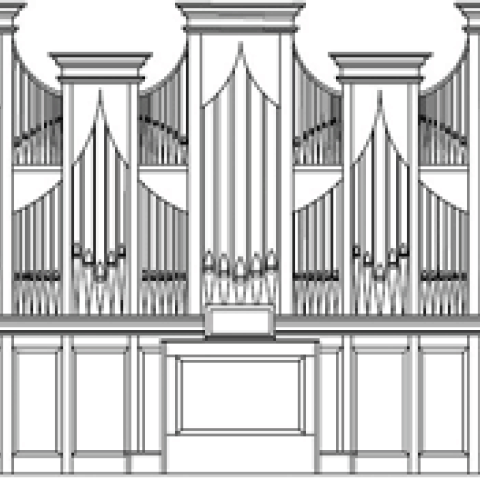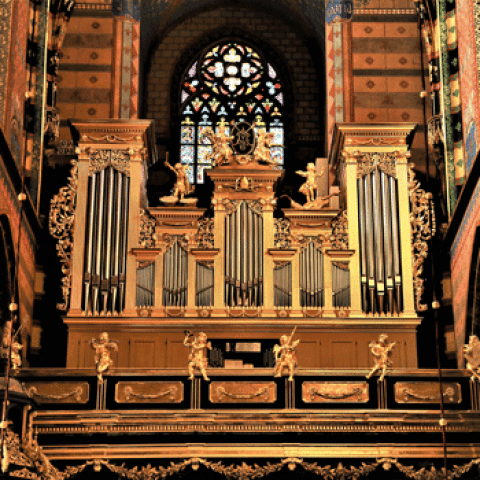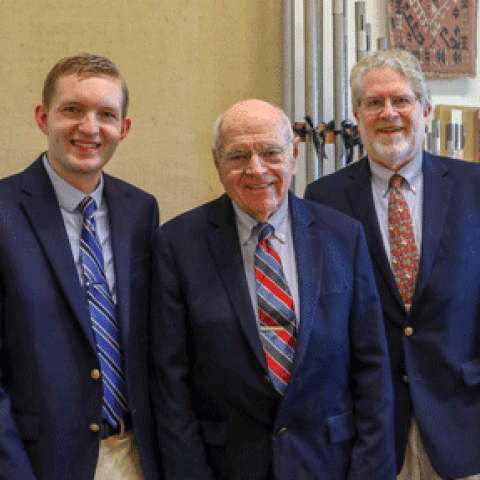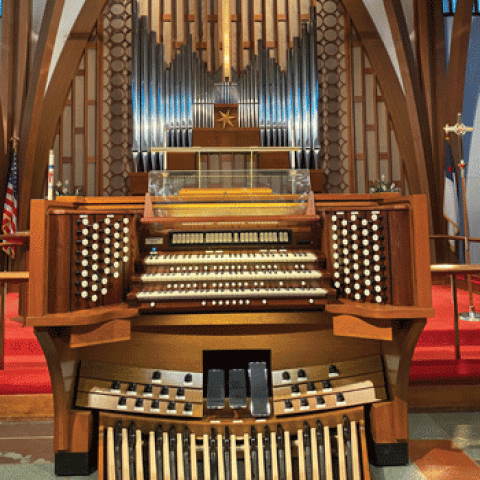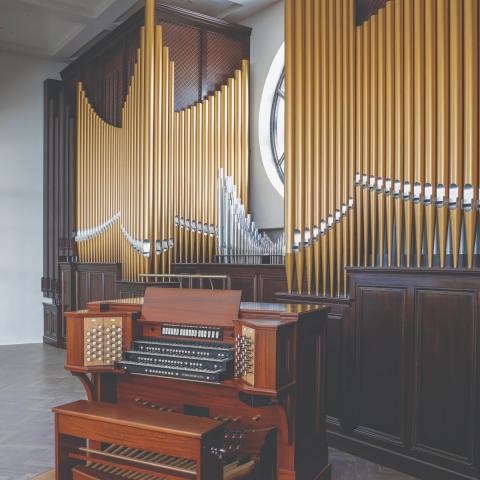
Schoenstein & Co., Benicia, California, is building a three-manual, 46-rank organ for Church of the Good Shepherd, Corpus Christi, Texas. Built in 1950, the Spanish-Mission-Revival building seats about 500 and offers a warm, balanced acoustic for voice and organ. The Episcopal parish and day school use the church every day for services, school events, and musical performances. Opus 185 will consist of a four-division chancel organ and an enclosed antiphonal organ in the rear gallery. The Swell will include double enclosure for the chorus reeds (32′, 16′, 8′, and 4′) and mixture.
Church of the Good Shepherd’s previous organ was designed by James B. Jamison. Subsequent alterations obscured Jamison’s tonal concept. Rector Milton Black, organist Mi Ou Lee, and consultant Ken Cowan have guided the project.
For information: schoenstein.com.
Other organ builder news:
Rieger organ for St. Mary's Basilica, Kraków

